Previous Day - Next Day
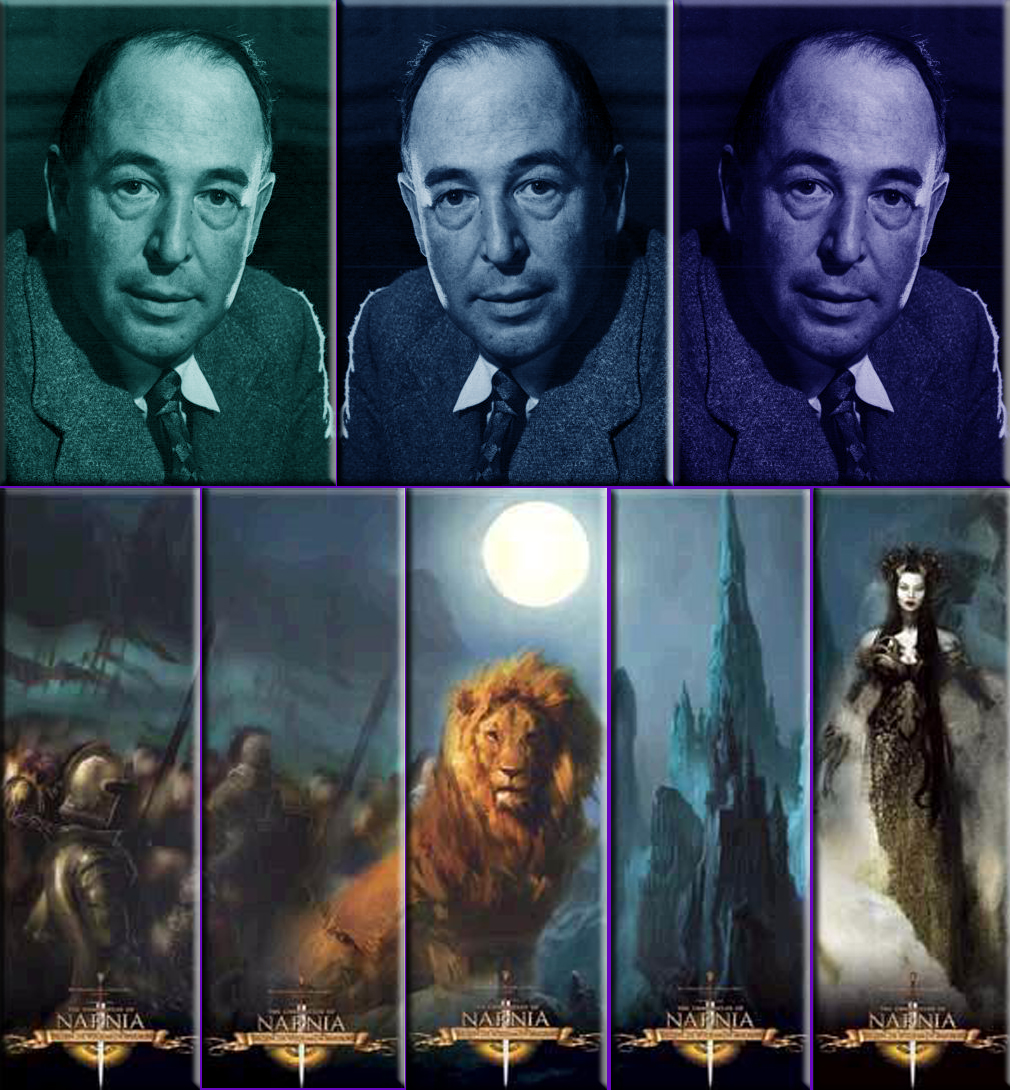
“Of all tyrannies, a tyranny sincerely exercised for the good of its victims may be the most oppressive. It would be better to live under robber barons than under omnipotent moral busybodies. The robber baron's cruelty may sometimes sleep, his cupidity may at some point be satiated; but those who torment us for our own good will torment us without end for they do so with the approval of their own conscience.”
~ C. S. Lewis
Wikiquote (Clive Staples Lewis (November 29 1898 – November 22 1963) an Irish author, scholar of medieval literature, and Christian apologist. He is best known for his essays on Christianity and for the children's fantasy series The Chronicles of Narnia.)
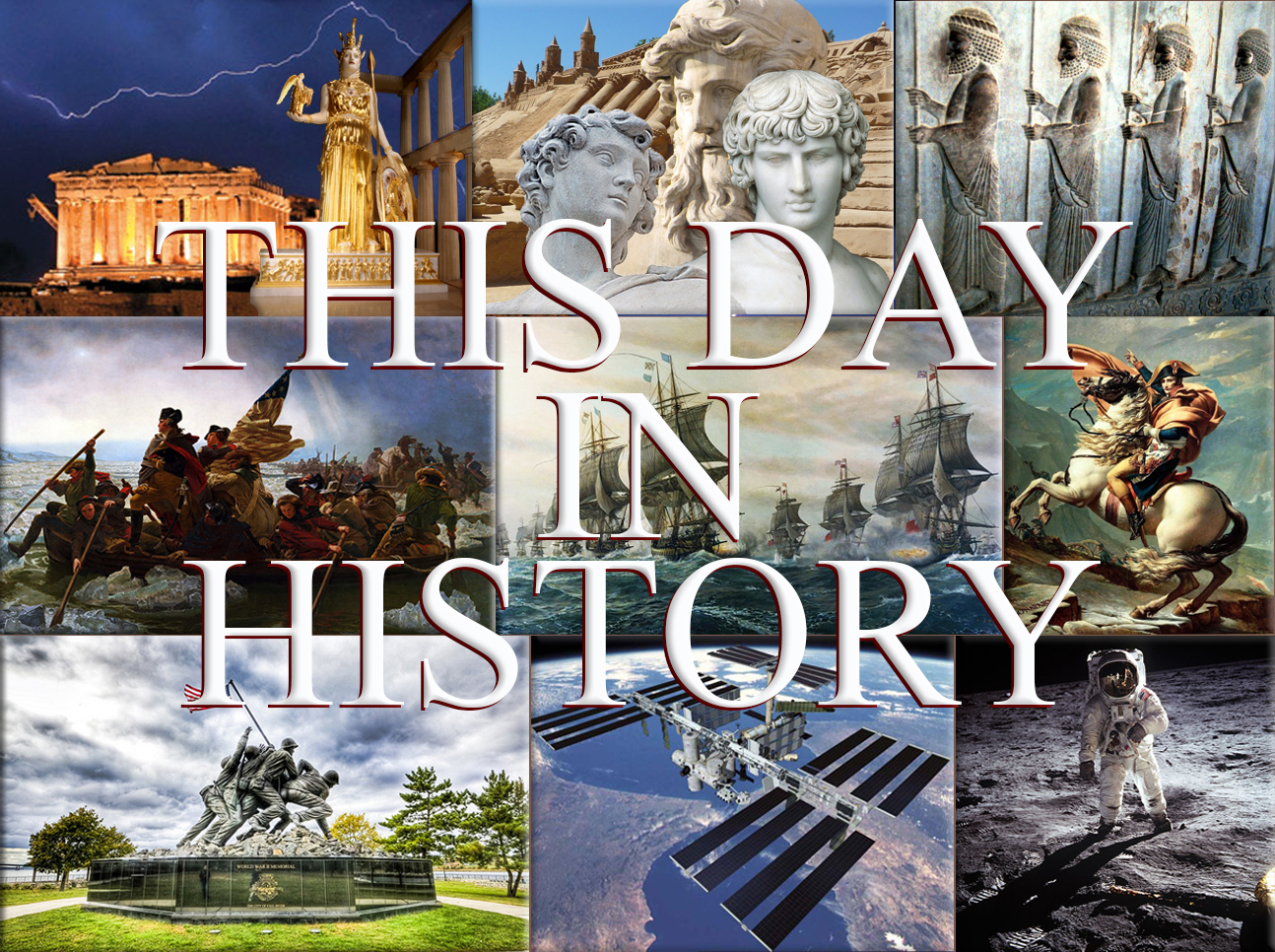
November 29th, 561

King Chlothar I dies at Compiègne. The Merovingian Dynasty is continued by his four sons Charibert I, Guntram, Sigebert I and Chilperic I who divide the Frankish Kingdom.
Wikipedia Photo: King Merovech - Legendry founder of Merovingian Dynasty
November 29th, 800
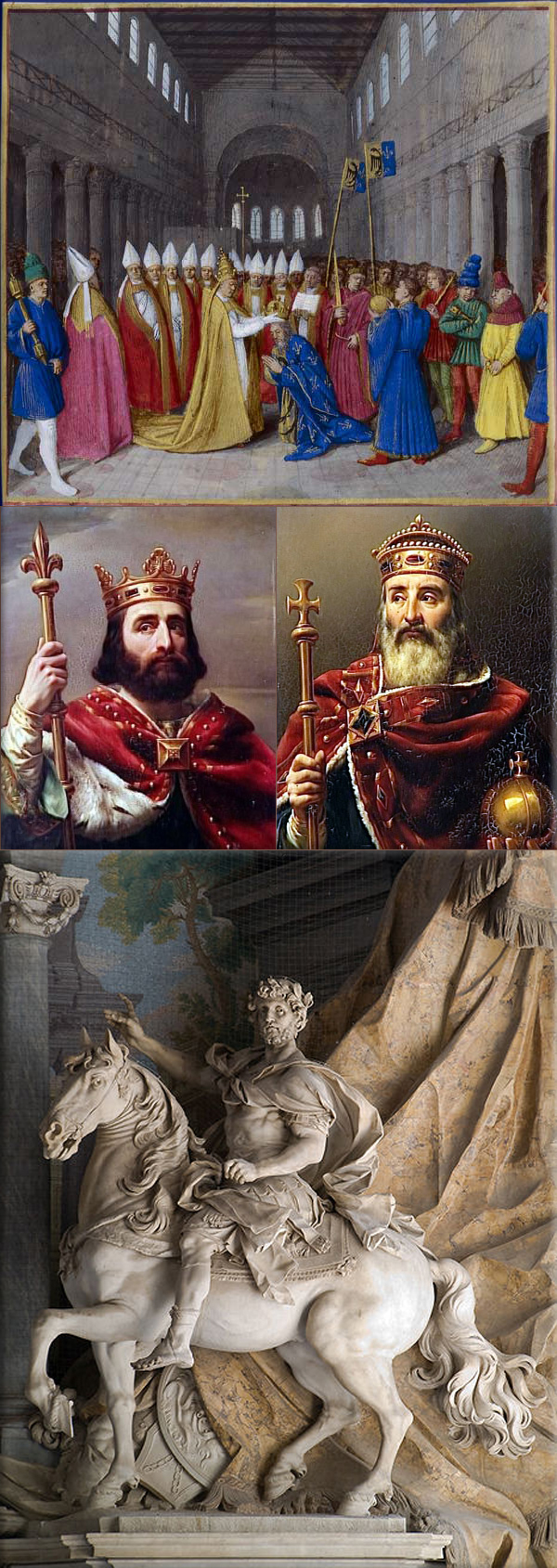
Charlemagne arrives at Rome to investigate the alleged crimes of Pope Leo III.
Wikipedia Painting: The coronation of Charlemagne / Carloman I - Charlemagne, Kings of The Franks; Statue équestre de Charlemagne, par Agostino Cornacchini (1725) - Basilique Saint-Pierre du Vatican, Italie..
November 29th, 1729
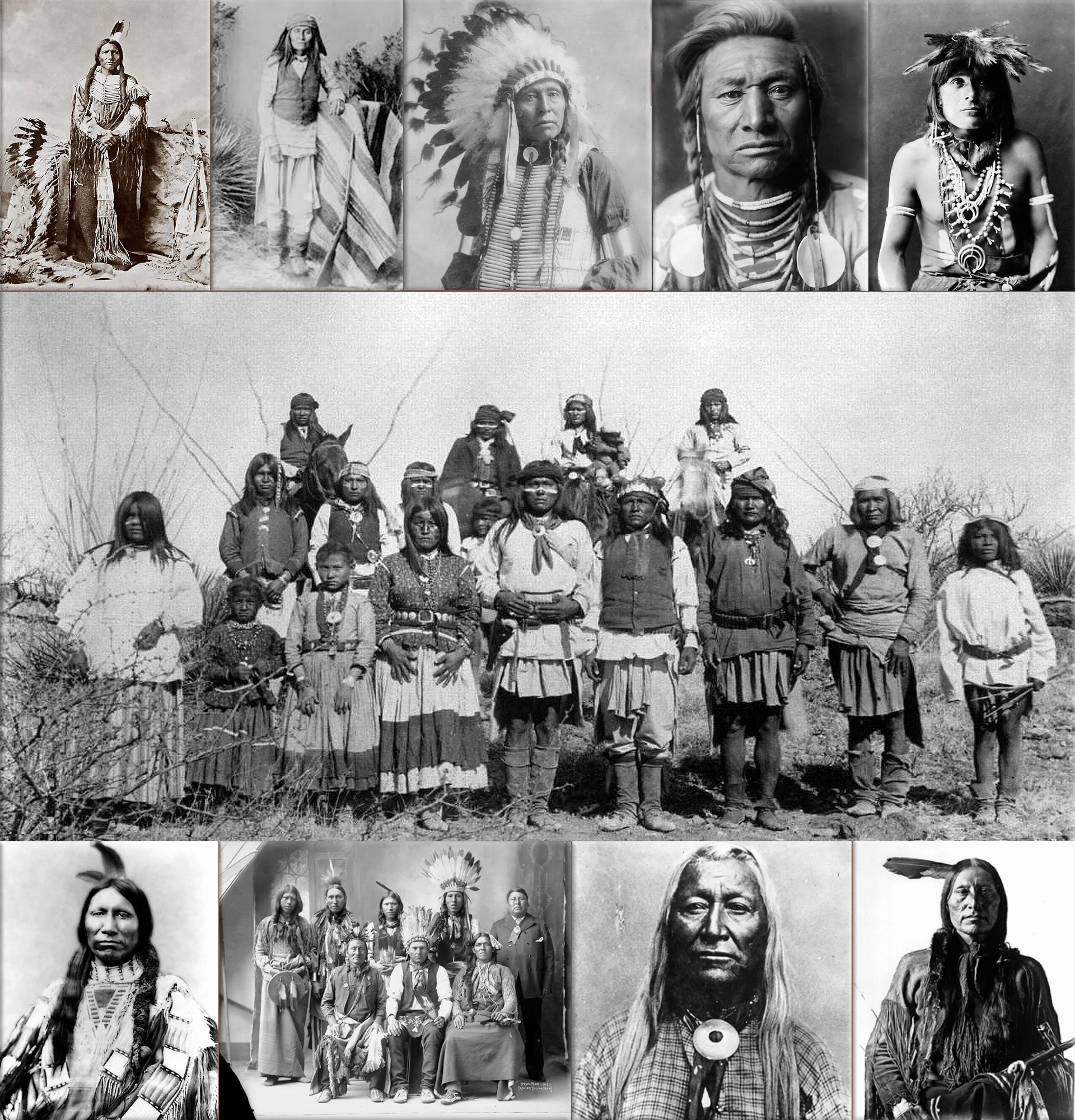

American Indian Wars:
1729 - Natchez Indians Massacre; 138 Frenchmen, 35 French women, and 56 children at Fort Rosalie, near the site of modern-day Natchez, Mississippi.
1847 - Whitman Massacre: Missionaries Dr. Marcus Whitman, his wife Narcissa, and 15 others are killed by Cayuse and Umatilla Indians, causing the Cayuse War.
1872 - Modoc War; begins with the Battle of Lost River.
Wikipedia Photos: American Indians - Chief Crazy Horse, Tashunca-uitco (1849 - 1877) ● Geronimo Apache Chief (1829 - 1909) ● Indian Chief 'Two Eagles'; Crow Indian Chief ● Snake Cheif ● Band of Chiricahua Apache Indians, followers of legendary renegade Geronimo, attending a peace negotiation after a long struggle against U.S. government attempts to force them onto reservations - Tombstone, Arizona (1886), Life Magazine ● American Horse - Oglala ● Native American Arapaho Indian ● Washakie, Shoshone leader ● Arapaho American Indian Chief. ● Dr. Whirlwind, Cayuse Warrior, University of Oregon Libraries - Special Collections and University Archives
November 29th, 1776
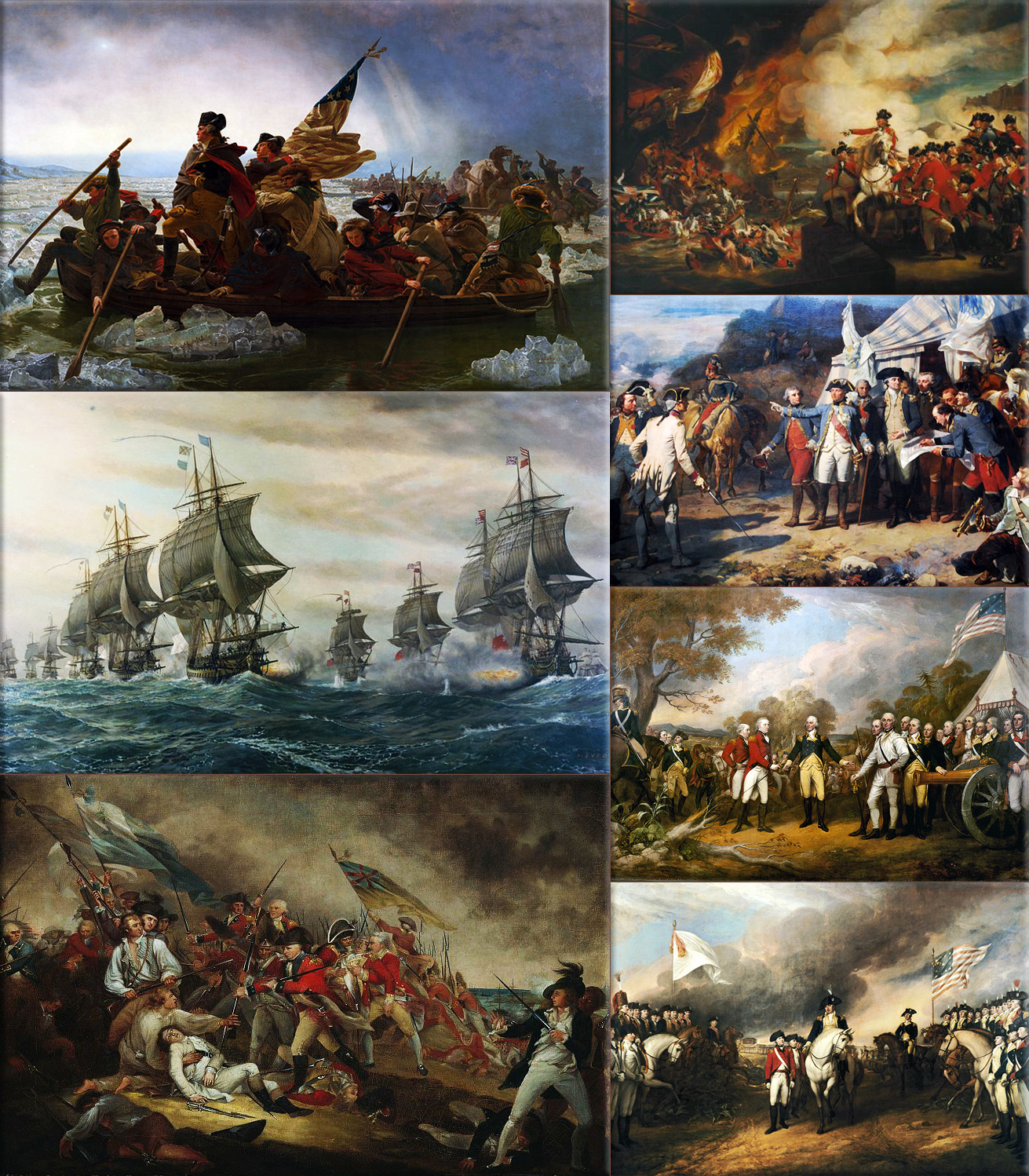
American Revolutionary War:
1775 - A British proclamation forbids residents from leaving Boston.
1776 - Battle of Fort Cumberland; Nova Scotia comes to an end with the arrival of British reinforcements.
Wikipedia Paintings: Washington Crossing the Delaware, by Emanuel Leutz; Battle of the Chesapeake, French (left) and British (right) lines; Battle of Bunker Hill, The Death of General Warren at the Battle of Bunker Hill by John Trumbull; The Defeat of the Floating Batteries at Gibraltar, September 13, 1782, by John Singleton Copley; Washington and the Comte de Rochambeau at Yorktown, 1781; "The surrender at Saratoga" shows General Daniel Morgan in front of a French de Vallière 4-pounder; Surrender of Cornwallis at Yorktown by (John Trumbull, 1797).
November 29th, 1781
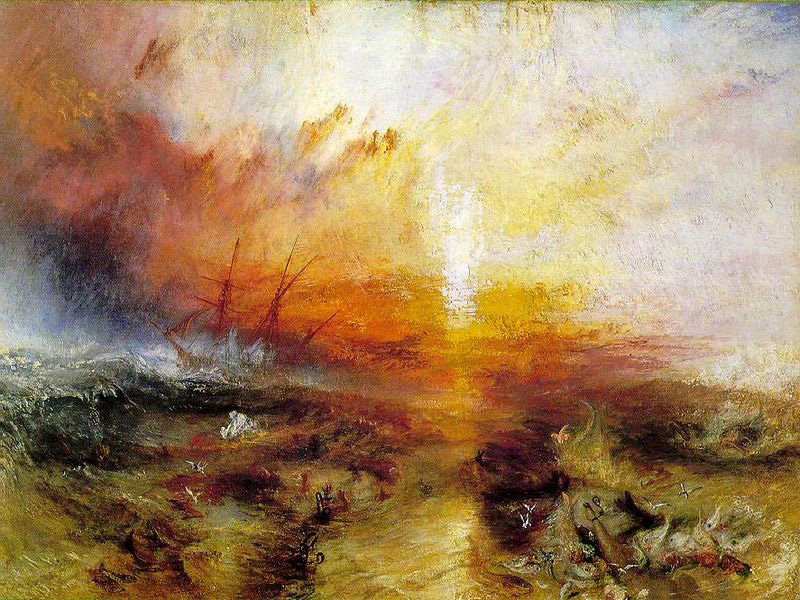
Zong Massacre: The crew of the British slave ship Zong murders 133 Africans by dumping them into the sea to claim insurance.
Wikipedia Painting: The Slave Ship, J. M. W. Turner's representation of the mass-murder of slaves, inspired by the Zong Massacre.
November 29th, 1830

November Uprising: An armed rebellion against Russia's rule in Poland begins.
Wikipedia Painting: Battle of Stoczek by Jan Rosen.
November 29th, 1864
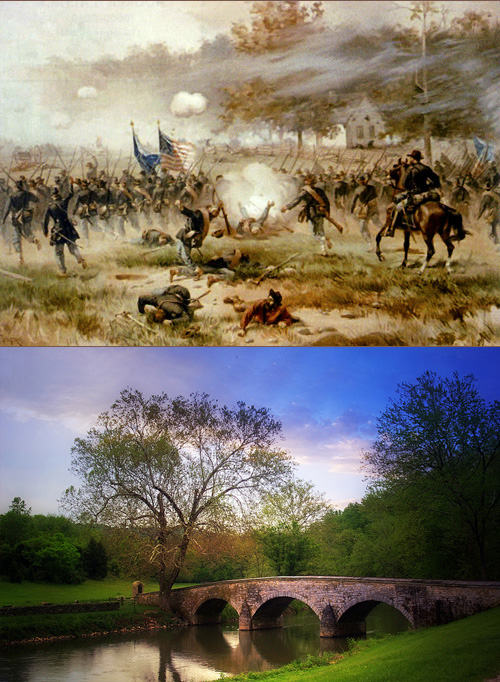
American Civil War:
1864 - Battle of Spring Hill; a Confederate advance into Tennessee misses an opportunity to crush the Union Army. Confederate General John Bell Hood is angered, which leads to the Battle of Franklin.
Wikipedia Photo: The northern army led by George McClellan and the southern army led by Robert E. Lee met at Antietam Creek, Maryland in September, 1862. It was a bloody battle where 13,000 Confederates and 12,000 Union troops died in just one day. McClellan had hesitated to attack before the battle thus letting the southern troops regroup. Also, he had saved reserves and refused to use them at the end of the battle thinking that Lee was holding reserves for a counterattack, even though those reserves didn't exist. The Union victory stopped Lee's northward advance and was a turning point in the war.
Although photography was still in its infancy, war correspondents produced thousands of images, bringing the harsh realities of the frontlines to those on the home front in a new and visceral way. The Atlantic.
Battle of Antietam / Stone Bridge at Antietam Battlefield - Sharpsburg, Maryland
November 29th, 1877
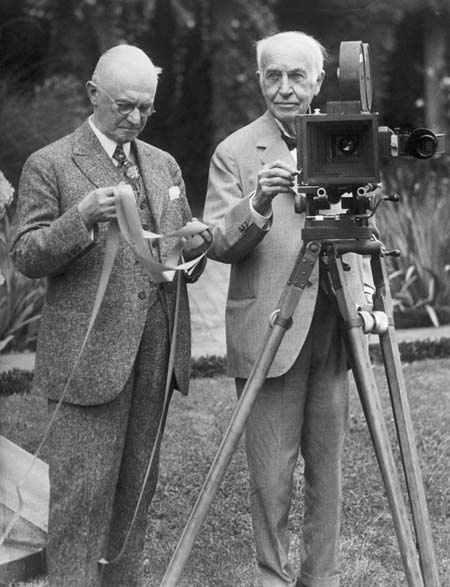
Thomas Edison demonstrates his phonograph for the first time.
Wikipedia Photo: Thomas Edison (right) demonstrating the kinetograph (motion picture camera), with the assistance of George Eastman, who helped develop the film used in the early motion picture machines.
November 29th, 1929
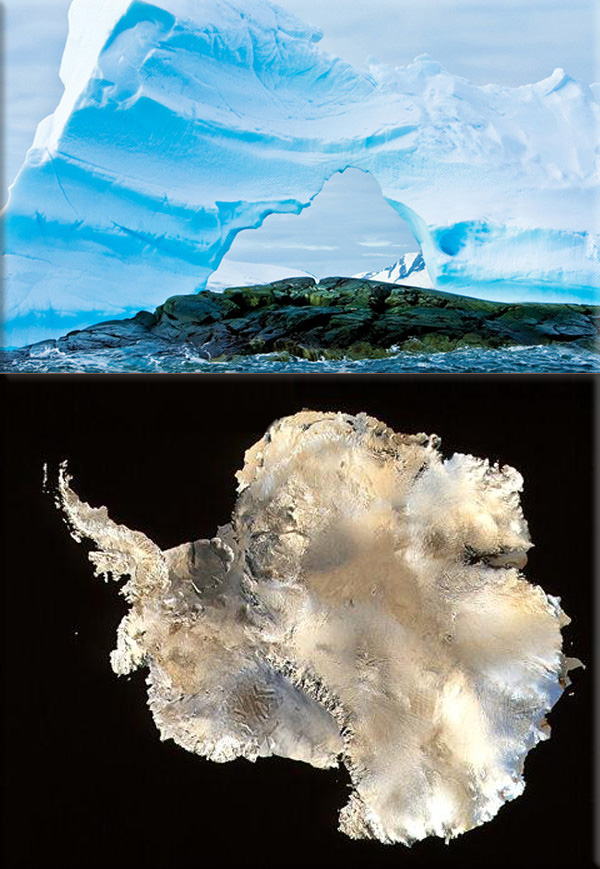
United States Admiral Richard Byrd becomes the first person to fly over the South Pole.
Wikipedia Photo: Antarctica (8/30/2012), credit National Geographic; Infrared satellite image of Antarctica, credit © Visual Photos.
November 29th, 1943
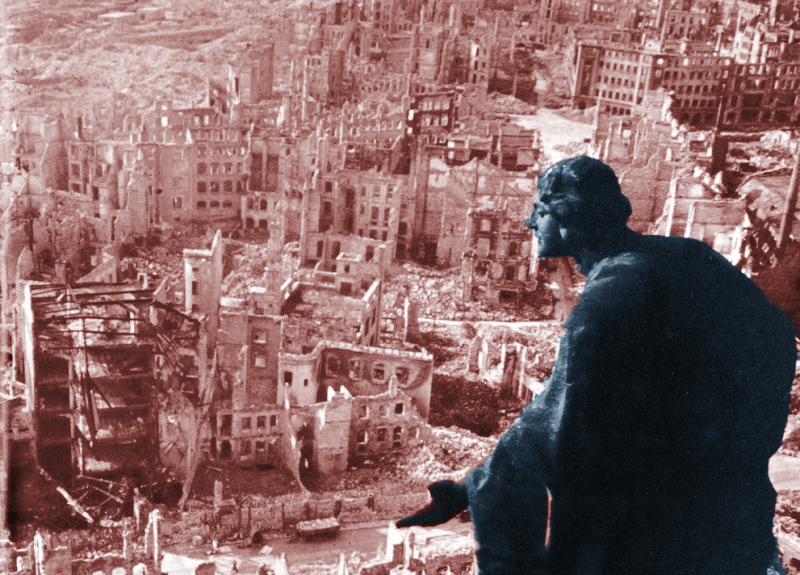

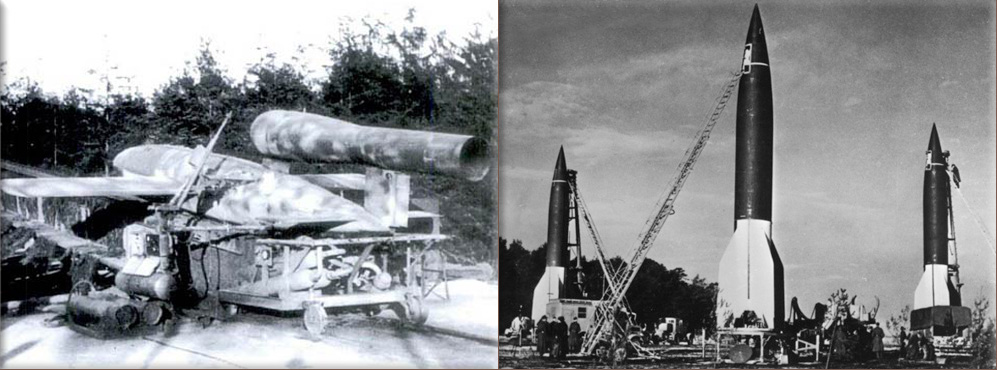
World War II:
1943 - The second session of AVNOJ, the Anti-fascist council of national liberation of Yugoslavia, is held in Jajce, Bosnia and Herzegovina, determining the post-war ordering of the country.
1944 - The first surgery (on a human) to correct blue baby syndrome is performed by Alfred Blalock and Vivien Thomas.
1944 - Albania is liberated by the Albanian partisans.
1945 - Federal People's Republic of Yugoslavia is declared.
Post World War II:
1947 - United Nations Partition Plan for Palestine; the United Nations General Assembly votes to partition Palestine.
1947 - My Trach Massacre; First Indochina War.
Wikipedia Photo: Bombing of Dresden in World War II; August Schreitmüller's sculpture 'Goodness' surveys Dresden after a firestorm started by Allied bombers in 1945.
USS Bunker Hill was hit by kamikazes piloted by Ensign Kiyoshi Ogawa and another airman on 11 May 1945. 389 personnel were killed or missing from a crew of 2,600; Ensign Kiyoshi Ogawa, who flew his aircraft into the USS Bunker Hill during a Kamikaze mission on 11 May 1945; Kamikaze Missions - Lt Yoshinori Yamaguchi's Yokosuka D4Y3 (Type 33 Suisei) "Judy" in a suicide dive against USS Essex. The dive brakes are extended and the non-self-sealing port wing tank is trailing fuel vapor and/or smoke 25 November 1944.
German V1 flying-bomb and V2 Rockets - Preparations for a Salvo Launch of V-2 Rockets in the Heidelager near Blizna (Poland) (1944), credit German History in Documents and Images GHDI.
November 29th, 1950
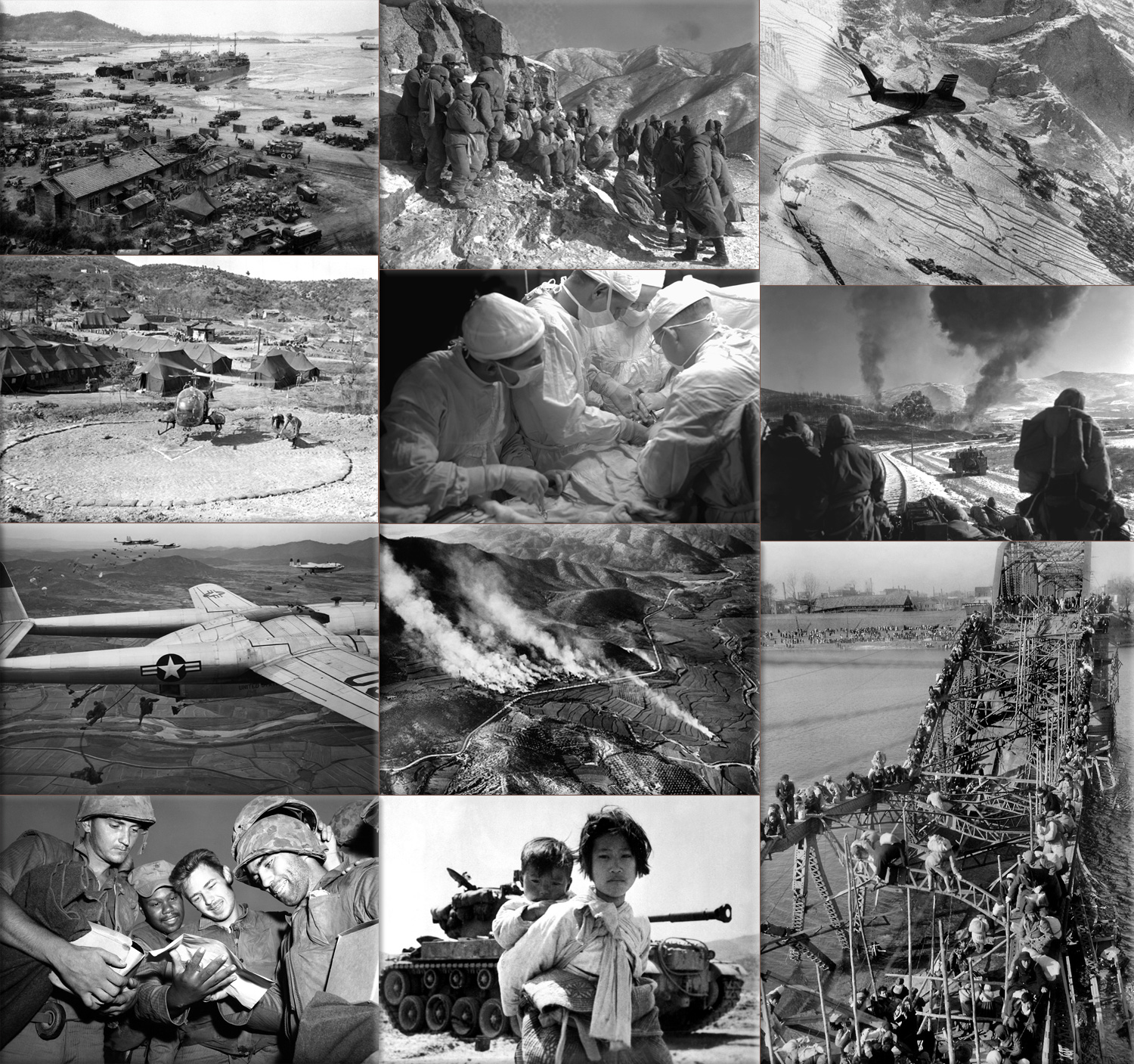
Korean War:
1950 - North Korean and Chinese troops force United Nations forces to retreat from North Korea.
1952 - United States President Dwight D. Eisenhower fulfills a campaign promise by traveling to Korea to find out what can be done to end the conflict.
Wikipedia Photo: Korean War Collage credit, The Big Picture, Boston Globe - (Associated Press; U.S. Department of Defense / SGT. F.C. Kerr; AP Photo; U.S. Department of Defense / TSGT. Charles B. Tyler; U.S. Department of Defense / TSGT. Charles B. Tyler; U.S. Department of Defense / TSGT. Robert H. Mosier; AP Photo / Max Desfor; U.S. Department of Defense / CPL. P. McDonald; AP Photo / Max Desfor; AP Photo/George Sweers; U.S. Navy / Maj. R.V. Spencer, UAF; AP Photo / Max Desfor).
November 29th, 1961
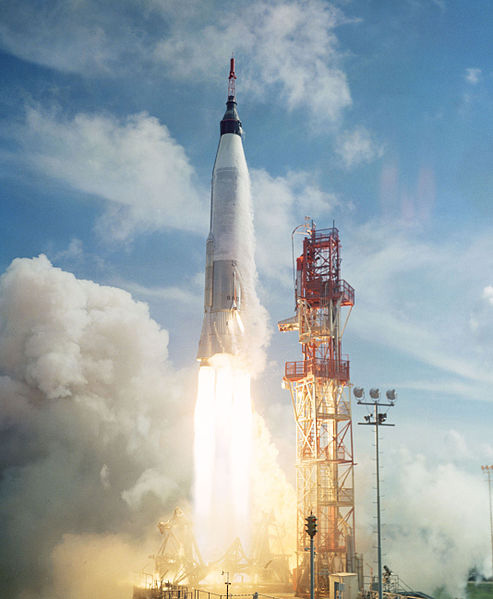
Project Mercury: Mercury-Atlas 5; Mission Enos, a chimpanzee, is launched into space. The spacecraft orbits the Earth twice and splashed-down off the coast of Puerto Rico.
Wikipedia Photo: Atlas, used for orbital missions - NASA
November 29th, 1963
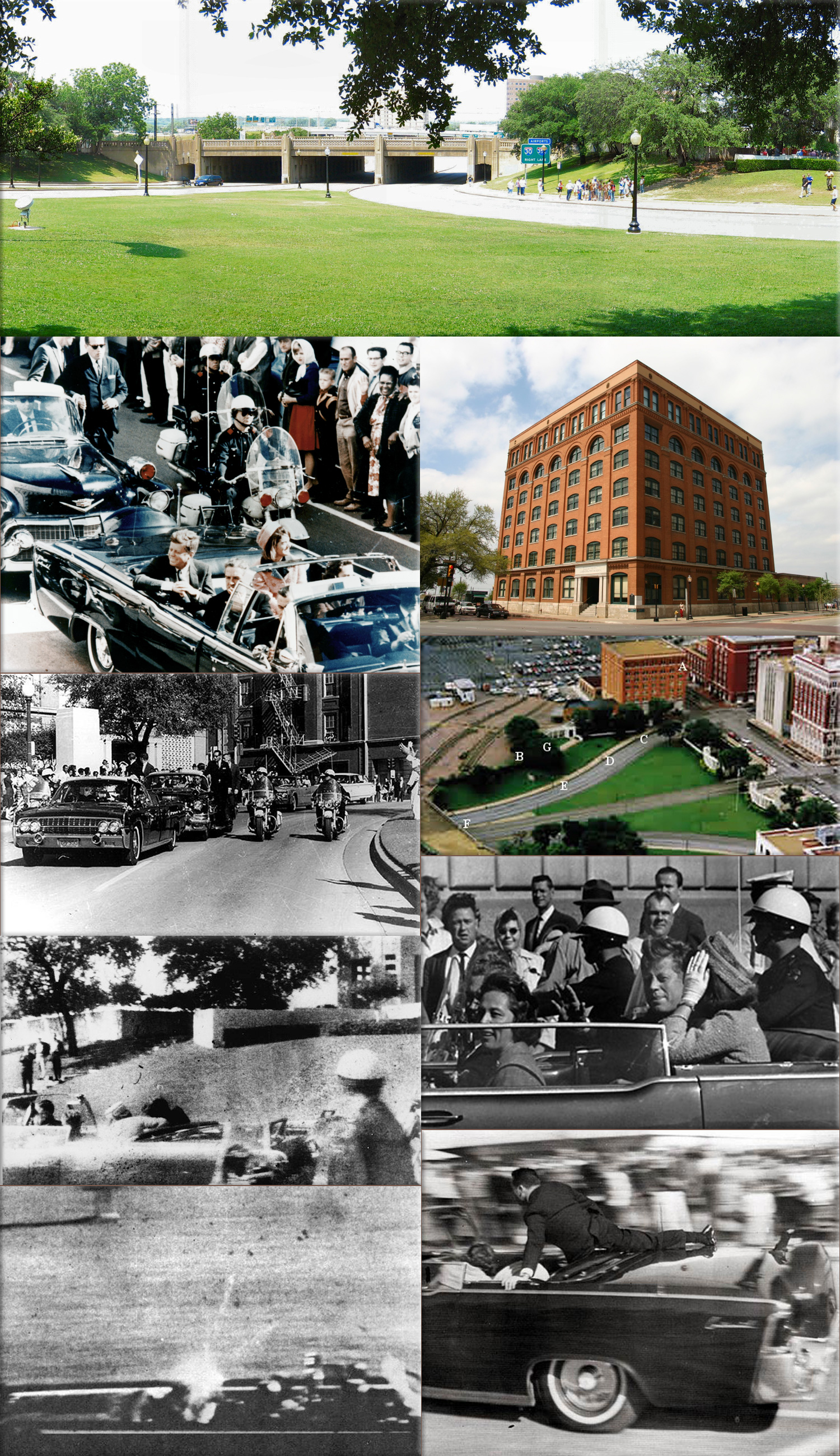
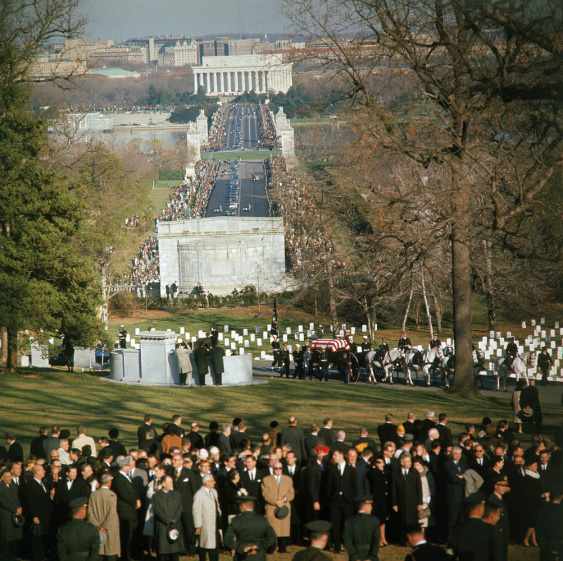
Assassination of John F. Kennedy:
1963 - President Lyndon B. Johnson establishes the Warren Commission to investigate the assassination of President John F. Kennedy.
Wikipedia Photo:
Dealey Plaza, with Elm Street on the right and the underpass in the middle;
President Kennedy with his wife, Jacqueline, and Texas Governor John Connally in the presidential limousine, minutes before the President's assassination;
Texas School Book Depository;
Aerial view of Dealey Plaza, credit Paullee.com -
A - "The Sniper's Nest", south-east corner window of the 6th floor (5th floor for Europeans) of the Texas School Book Depository Building
B - "The Grassy Knoll", speculated location of second gunman
C - Approximate location of limousine at time of first shot
D - Approximate location of limousine at time of the "neck wound" shot
E - Approximate location of limousine at time of fatal head wound
F - James Tague's location. Note how far away he is from the shots!
G - Abraham Zapruder's filming location, on top of a stone pedestal,
James Altgen's Press Photograph;
Secret Service agent Clint Hill climbs onto the presidential limousine, seconds after the fatal shot.
Associated Press photo open-topped limo in Dallas, Time Magazine;
Mary Moorman's Polaroid photo taken a fraction of a second after the fatal shot;
Zapruder film at moment of fatal head shot.
A horse-drawn caisson bears the body of President John F. Kennedy into Arlington Cemetery, November 25, 1963.
November 29th, 1967
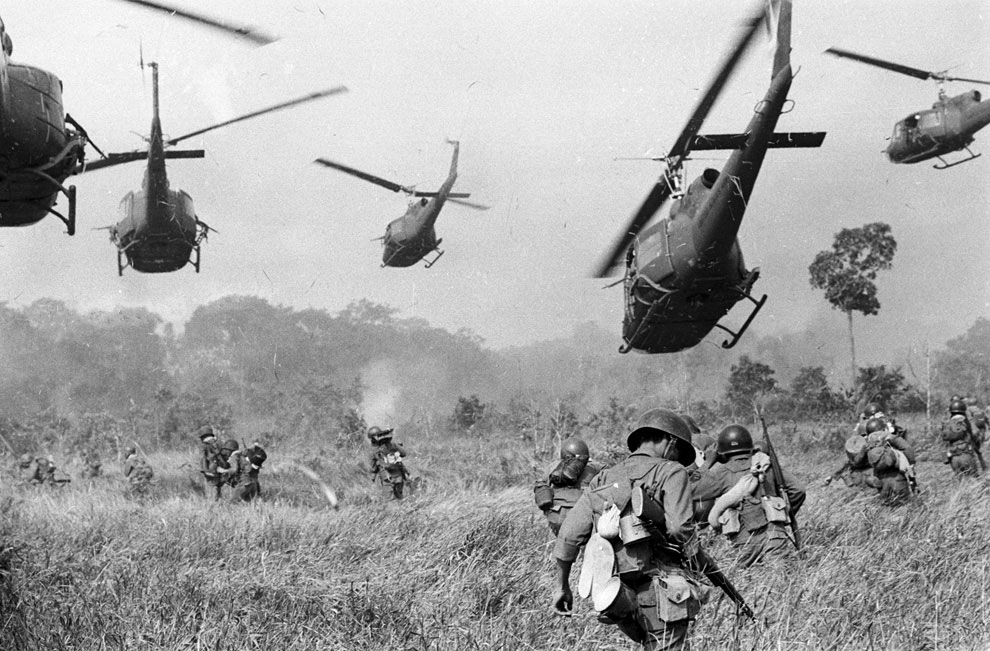
Vietnam War:
1967 - United States Secretary of Defense Robert McNamara announces his resignation.
Wikipedia Photo: Vietnam War: Hovering U.S. Army helicopters pour machine gun fire into a tree line to cover the advance of South Vietnamese ground troops in an attack on a Viet Cong camp 18 miles north of Tay Ninh, northwest of Saigon near the Cambodian border, in Vietnam on March 1965. (AP Photo / Horst Faas) / Boston Globe
November 29th, 1983
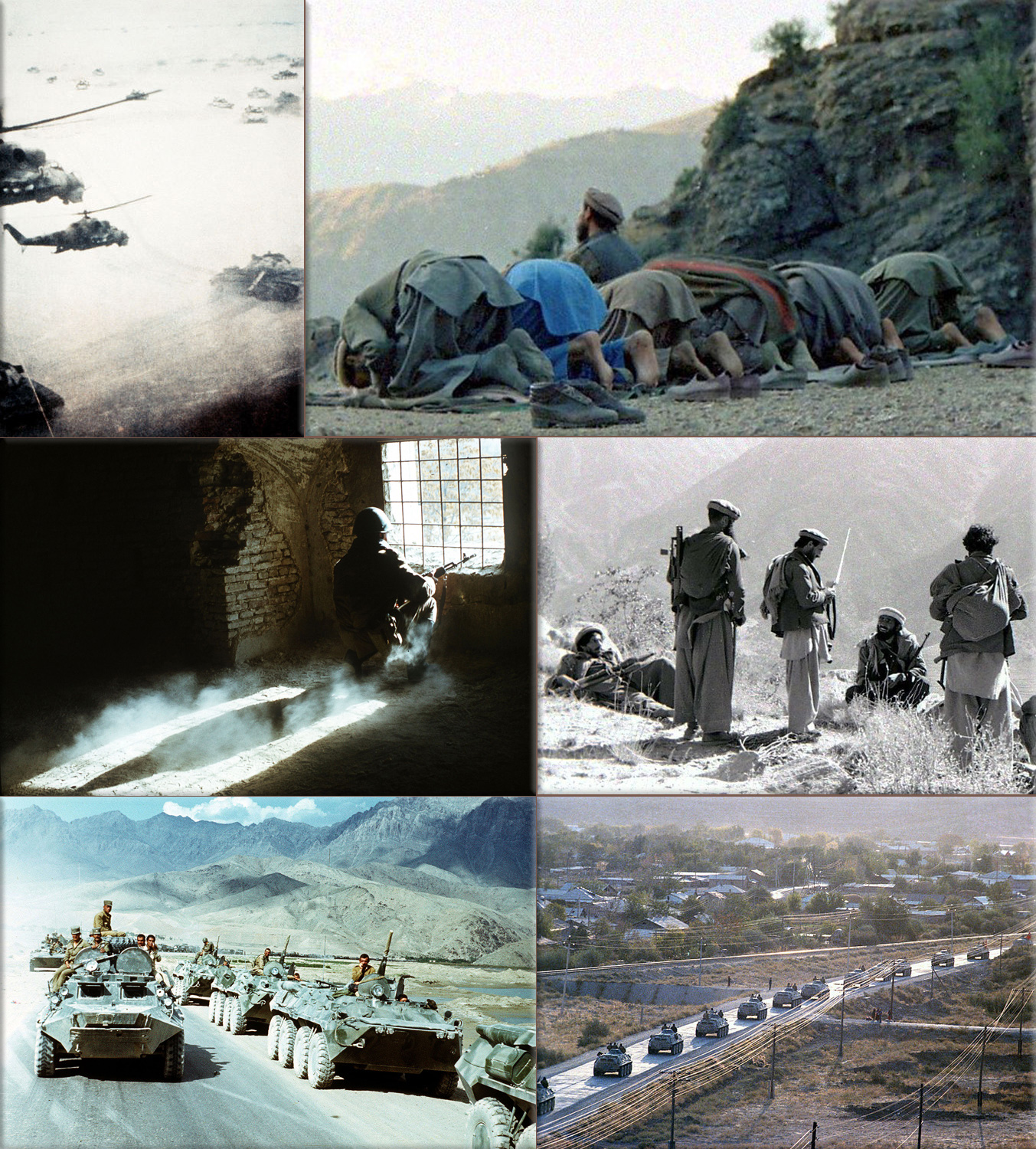
Soviet war in Afghanistan: The United Nations General Assembly passes a resolution stating that Soviet Union forces should withdraw from Afghanistan.
Wikipedia Photo: Soviet ground forces in action while conducting an offensive operation against the Islamist resistance, the Mujahideen; Mujahideen praying in Shultan Valley, 1987; Soviet soldier in Afghanistan, 1988; Mujahideen, 1987; Soviet troops withdrawing from Afghanistan in 1988; A column of Soviet BTR armored personnel carriers departing from Afghanistan.
November 29th, 1990
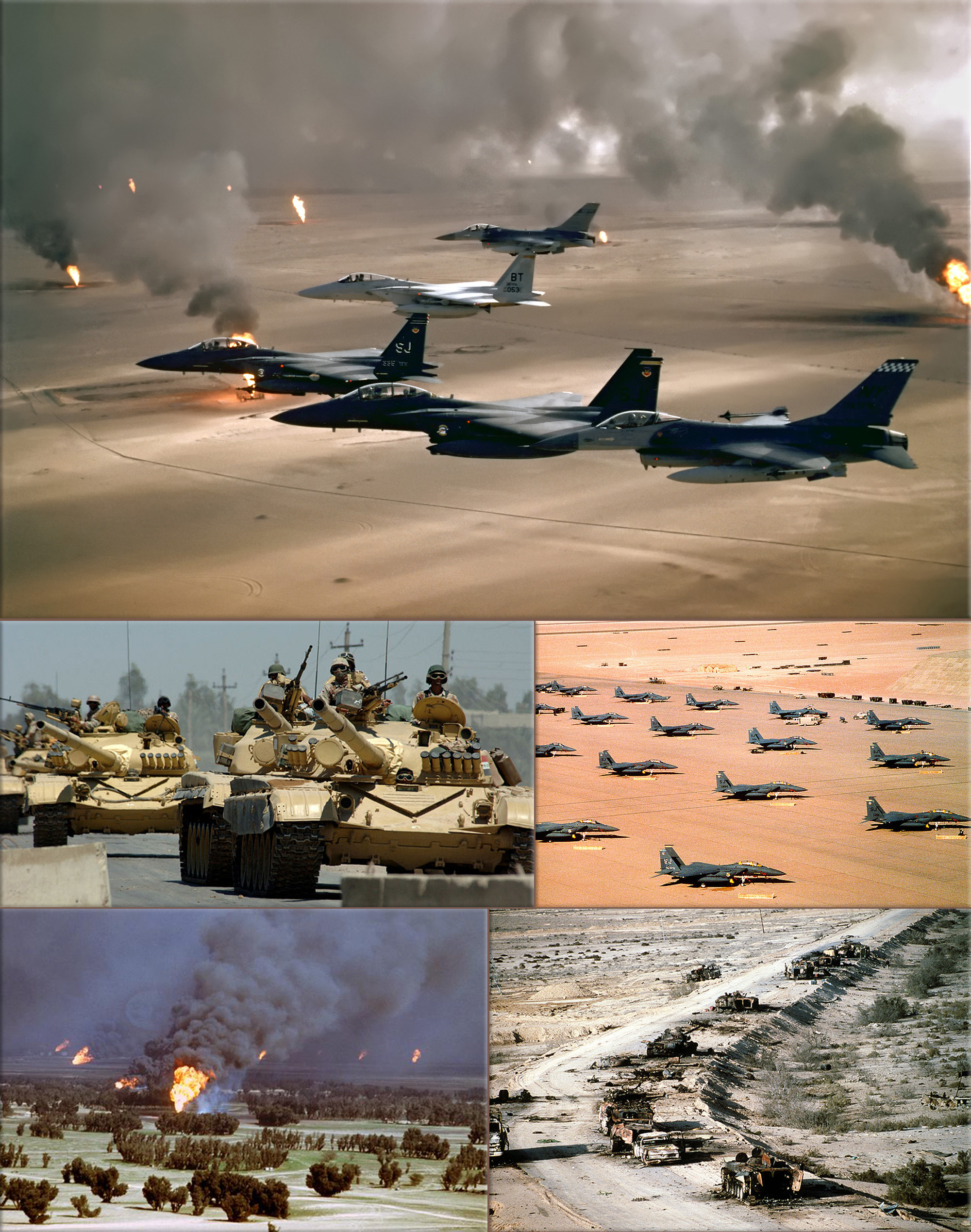
Gulf War - Iraq War:
1990 - United Nations Security Council passes two resolutions to restore international peace and security if Iraq did not withdraw its forces from Kuwait and free all foreign hostages by January 15, 1991.
Wikipedia Photo: USAF F-15Es, F-16s, and a USAF F-15 flying over burning Kuwaiti oil wells; Iraqi Army T-72 main battle tanks. The T-72 tank was a common Iraqi battle tank used in the Gulf War; F-15Es parked during Operation Desert Shield; The oil fires caused were a result of the scorched earth policy of Iraqi military forces retreating from Kuwait; Aerial view of destroyed Iraqi T-72 tank, BMP-1 and Type 63 armored personnel carriers and trucks on Highway 8 in March 1991.
